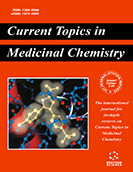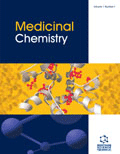摘要
幽门螺杆菌是世界上最常见的病原菌,约占世界人口的50%,引起胃腺癌、慢性胃炎、胃黏膜相关淋巴组织(MALT)淋巴瘤等重要疾病。近年来,各种研究报道幽门螺杆菌生物膜可能是根除该细菌感染的关键因素之一。生物膜抑制抗生素的渗透,增加外排泵和突变的表达,多重治疗失败和慢性感染。纳米粒子和天然产物可以通过破坏幽门螺杆菌的外层和抑制细菌的初始结合来破坏幽门螺杆菌的生物膜。此外,使用破坏细胞外聚合物物质的联合疗法减少了球菌形式的细菌和降解外基质中的多糖,从而增加了抗生素的渗透性和性能。不同的益生菌、抗菌肽、化学物质和多糖通过抑制幽门螺杆菌的粘附和定殖,可以防止该细菌形成生物膜。值得注意的是,以上许多都适用于酸性pH值,可用于治疗胃炎。因此,幽门螺杆菌的生物膜可能是导致该细菌感染无法根除的主要原因之一,抗生素无法破坏该生物膜。因此,有必要使用新的策略来防止复发和慢性感染通过抑制生物膜的形成。
关键词: 幽门螺杆菌,生物膜,胃炎,抗生素耐药性,新策略,维生素B12。
Current Molecular Medicine
Title:Helicobacter pylori Biofilm and New Strategies to Combat it
Volume: 21 Issue: 7
关键词: 幽门螺杆菌,生物膜,胃炎,抗生素耐药性,新策略,维生素B12。
摘要: Helicobacter pylori, the most frequent pathogen worldwide that colonizes around 50% of the world’s population, causes important diseases such as gastric adenocarcinoma, chronic gastritis, and gastric mucosa-associated lymphoid tissue (MALT) lymphoma. In recent years, various studies have reported that H. pylori biofilm may be one of the critical barriers to the eradication of this bacterial infection. Biofilms inhibit the penetration of antibiotics, increase the expression of efflux pumps and mutations, multiple therapeutic failures, and chronic infections. Nanoparticles and natural products can demolish H. pylori biofilm by destroying the outer layers and inhibiting the initial binding of bacteria. Also, the use of combination therapies destroying extracellular polymeric substances decreases coccoid forms of bacteria and degrading polysaccharides in the outer matrix that lead to an increase in the permeability and performance of antibiotics. Different probiotics, antimicrobial peptides, chemical substances, and polysaccharides by inhibiting adhesion and colonization of H. pylori can prevent biofilm formation by this bacterium. Of note, many of the above are applicable to acidic pH and can be used to treat gastritis. Therefore, H. pylori biofilm may be one of the major causes of failure to eradication of infections caused by this bacterium, and antibiotics are not capable of destroying the biofilm. Thus, it is necessary to use new strategies to prevent recurrent and chronic infections by inhibiting biofilm formation.
Export Options
About this article
Cite this article as:
Helicobacter pylori Biofilm and New Strategies to Combat it, Current Molecular Medicine 2021; 21 (7) . https://dx.doi.org/10.2174/1566524020666201203165649
| DOI https://dx.doi.org/10.2174/1566524020666201203165649 |
Print ISSN 1566-5240 |
| Publisher Name Bentham Science Publisher |
Online ISSN 1875-5666 |
 65
65
- Author Guidelines
- Bentham Author Support Services (BASS)
- Graphical Abstracts
- Fabricating and Stating False Information
- Research Misconduct
- Post Publication Discussions and Corrections
- Publishing Ethics and Rectitude
- Increase Visibility of Your Article
- Archiving Policies
- Peer Review Workflow
- Order Your Article Before Print
- Promote Your Article
- Manuscript Transfer Facility
- Editorial Policies
- Allegations from Whistleblowers
Related Articles
-
Vitamin D Supplementation and Cancer: Review of Randomized Controlled Trials
Anti-Cancer Agents in Medicinal Chemistry Cardiovascular Pharmacogenetics of Anti-Thrombotic Agents and Non-Steroidal Anti-Inflammatory Drugs
Current Molecular Medicine Biology and Clinical Management of Myeloproliferative Neoplasms and Development of the JAK Inhibitor Ruxolitinib
Current Medicinal Chemistry Microscopies at the Nanoscale for Nano-Scale Drug Delivery Systems
Current Drug Targets Germinated Soybean Products as Nutraceutical Compounds in Breadmaking
Current Nutrition & Food Science Development of Vascular Endothelial Growth Factor Receptor (VEGFR) Kinase Inhibitors as Anti-Angiogenic Agents in Cancer Therapy
Current Medicinal Chemistry A Proposed Screening Paradigm for Discovery of Covalent Inhibitor Drugs
Drug Metabolism Letters Testicular Germ Cell Tumors: A Paradigm for the Successful Treatment of Solid Tumor Stem Cells
Current Cancer Therapy Reviews Recent Advances in Hematopoietic Stem Cell-Mediated Regeneration
Recent Patents on Regenerative Medicine Subject Index To Volume 3
Vascular Disease Prevention (Discontinued) The Role of FLT3 Kinase as an AML Therapy Target
Current Pharmaceutical Design Azoles as Effective Antifungal Agents: Trends, Scope and Relevance
The Natural Products Journal Sesbania: A Prospective Candidate to be Excavated for Anticancer Drugs
The Natural Products Journal Which Dose of Folic Acid Should Pregnant Diabetic Women Receive?
Recent Patents on Endocrine, Metabolic & Immune Drug Discovery (Discontinued) New Approaches to Mechanism Analysis for Drug Discovery Using DNA Microarray Data Combined with KeyMolnet
Current Drug Discovery Technologies The Biological Functions of NF-κB1 (p ) and its Potential as an Anti-Cancer Target
Current Cancer Drug Targets Bcl-2 Family Proteins as Therapeutic Targets
Current Pharmaceutical Design Molecular Mechanisms of Epigenetic Regulators as Activatable Targets in Cancer Theranostics
Current Medicinal Chemistry The Role of Platelet/Lymphocyte Serotonin Transporter in Depression and Beyond
Current Drug Targets NQDI 1, An Inhibitor of ASK1 Attenuates Acute Ischemic Renal Injury by Modulating Oxidative Stress and Cell Death
Cardiovascular & Hematological Agents in Medicinal Chemistry

















.jpeg)








